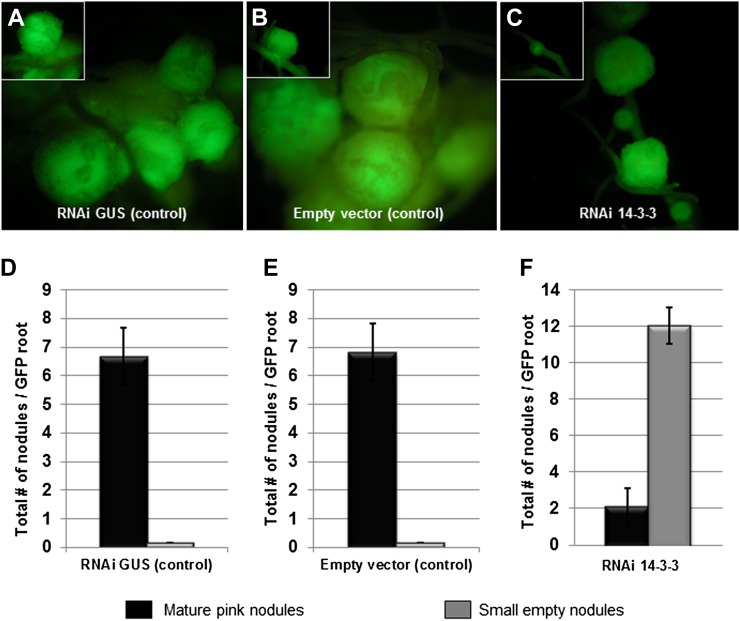Figure 5.
Nodulation response in transgenic soybean 14-3-3-silenced roots after inoculation with B. japonicum. A to C, Five-week-old GFP-expressing root nodule phenotypes for empty vector control (A), RNAi GUS control (B), and RNAi 14-3-3 (C) in soybean hairy roots. The RNAi 14-3-3 roots exhibited poor nodulation (as small bumps or empty nodules), whereas the controls showed many fully mature nodules. D to F, Quantitation of nodulation from empty vector control (D), RNAi GUS control (E), and RNAi 14-3-3 (F) soybean hairy roots. Empty nodules (gray bars) were counted as small bumps just emerging on the root surface from the root cortex, while mature nodules (black bars) were counted as full sized with a pink internal color. The data represent average values of 24 individual plants (per biological replicate) containing transgenic nodulated roots. se bars are shown for total number of mature nodules and small empty nodules of three independent biological replicates.

